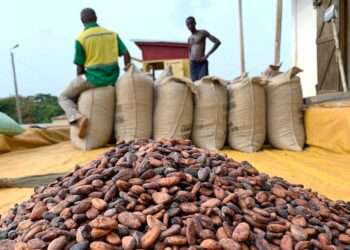Bond market activity in Ghana exploded last week as secondary market trading leapt to GH¢3.47 billion, a 284.53% increase from the prior week’s GH¢904 million.
Offshore buyers drove the surge, concentrating their purchases in short- to medium-term maturities while local investors stayed on the sidelines. The February 2027 bond led volumes with GH¢1.14 billion traded, underscoring a renewed appetite for near-dated government paper.
The rush into government securities came against the backdrop of a decisive move by the Bank of Ghana. At its most recent Monetary Policy Committee meeting the central bank lowered the Monetary Policy Rate by 350 basis points to 21.5 percent — a large easing that has re-priced the yield curve and prompted investors to recalibrate positions across tenors.
Offshore buyers dominate while locals wait
Domestic players largely held back during the rally, with market participants citing liquidity concerns and a wait-and-see stance as policy shifted. Local fund managers and pension investors remain cautious, balancing the lower policy rate against still-elevated real yields and concerns over fiscal dynamics.
By contrast, offshore portfolio flows accounted for the bulk of buy orders, attracted by relatively high nominal yields and the potential for capital gains if yields compress further.
Short- to medium-term papers dominated trading, with the 2027–2030 bucket representing the lion’s share of activity. Traders reported a weighted average Yield-to-Maturity in that segment of around 16.35%, while 2031–2038 papers recorded roughly 16.30% — levels that many foreign buyers found appealing relative to other emerging-market returns. The strong showing of near-dated maturities points to tactical positioning by investors looking to benefit from both carry and prospective capital gains.
Why foreign interest surged
Analysts say the timing of the rate cut has important implications. With policy rates now lower, the yield curve is likely to drift downward, which would lift bond prices and reward investors who bought before the cut. That dynamic helps explain the heavy offshore participation: international buyers who entered ahead of the MPC move could now hold for capital appreciation or rotate into longer maturities to lock in income at still-attractive levels.
However, risks remain. Heavy reliance on foreign inflows can increase vulnerability to shifts in global risk appetite; a reversal could quickly drain liquidity and push yields higher. Similarly, domestic demand needs to pick up to stabilize the market over the medium term — more buy-side participation from pension funds, insurers, and mutual funds would make yields less sensitive to sudden external shocks.
Broader macroeconomic implications
The policy easing also carries wider economic consequences. Easier monetary conditions can support credit growth and reduce borrowing costs for businesses and consumers, helping sustain the nascent recovery in activity. But authorities will need to balance stimulus with vigilance on inflation and external buffers to avoid eroding recent disinflation gains.
Market participants highlighted specific yield readings and signalled the factors to monitor: the pace of disinflation, clarity on fiscal consolidation, and the trajectory of foreign reserves. Positive trends on these fronts would reduce risk premia and encourage more balanced participation across investor types. The coming fortnight will be critical for market direction. Indeed.
The explosive weekly pickup to GH¢3.47 billion demonstrates the market’s capacity to absorb large flows, especially from offshore buyers. With the Bank of Ghana’s policy shift now in the books, the immediate question is whether foreign interest will translate into sustained liquidity and whether local investors will re-enter in meaningful size — decisions that will ultimately determine whether this rally matures into a steadier recovery or remains a short-lived technical surge.
READ ALSO: Trump’s UK Visit Brings Boost for Struggling Starmer





















